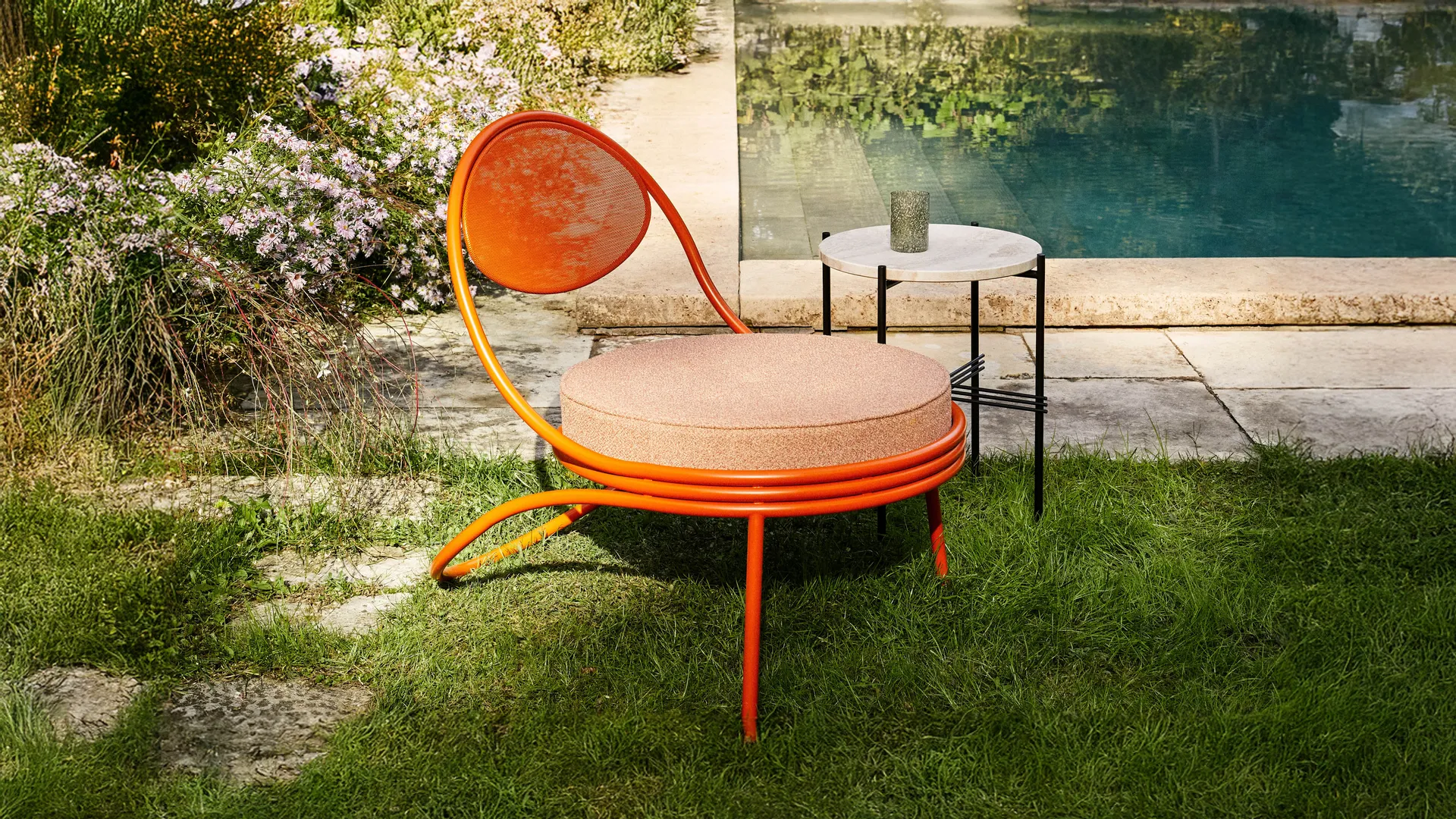
COPACABANA LOUNGE CHAIR
BY MATHIEU MATÉGOT
Created in 1955, Matégot’s iconic chair has been sensitively updated as a statement piece of indoor-outdoor furniture.
OPTIMISED FOR COMFORT
The 360o revision preserves the singular expressive genius of Matégot’s vision while introducing a bold new colorway and refining its ergonomics for modern-day body shapes. A precision-engineered adjustment to the angle of the backrest and seat maximizes comfort when sitting.
A low-slung lounge chair perfect for a relaxed, easygoing lifestyle, the Copacabana has a unique expression that seems to have been designed with a single stroke of a pencil. Both decorative and structural, curving tubes of metal form the legs, seat, and frame of the backrest, giving the chair a sense of dynamic motion.
TWO COLORWAYS
In addition to classic black, GUBI has developed an edition in International Orange, a color that Matégot turned to in a number of his furniture and lighting designs of the 1950s, including early editions of the Copacabana. This bright, bold, and joyful color is favored everywhere from engineering and architecture – it is the color of the Golden Gate Bridge – to high fashion, where it has come to represent the heights of luxury. The use of orange introduces a distinctive playfulness to the chair, adding a contrasting softer dimension to the industrial hardness of the metal.
FOR INDOORS AND OUT
Copacabana’s new ability to migrate from inside to out is a natural evolution of Matégot’s own furniture vision. Like his comparably curvy Tropique Collection, the Copacabana Chair has a distinctly bohemian aesthetic and an alfresco feel, expressing its creator’s approach to living space, where the difference between indoor and outdoor furniture lies not in aesthetics, only in material.
MATHIEU MATÉGOT
Mathieu Matégot (1910 - 2001) was a versatile, independent, and self-taught Hungarian designer, architect and artist who spent most of his life in his beloved Paris, where he for the first time settled in 1931 after finishing his studies at Budapest's School of Art and Architecture.
In 1939, Matégot signed up as a volunteer for the French army but was held as a prisoner in Germany until he escaped in 1944. This wartime captivity was an important time, career-wise, for Matégot as it was here he was able to familiarise himself with the innovative material and technique, Rigitulle - which later would become a characteristic trait of his..
MATÉGOT COLLECTION
OUTDOOR COLLECTION
GUBI’s Alfresco embodies this bohemian spirit, celebrating a lifestyle that cherishes creativity, freedom, and the simple pleasures of the outdoors. It is an invitation to embrace a free and fresh way of living, where convention is cast aside, spontaneity thrives, and nature is woven into the fabric of everyday life.